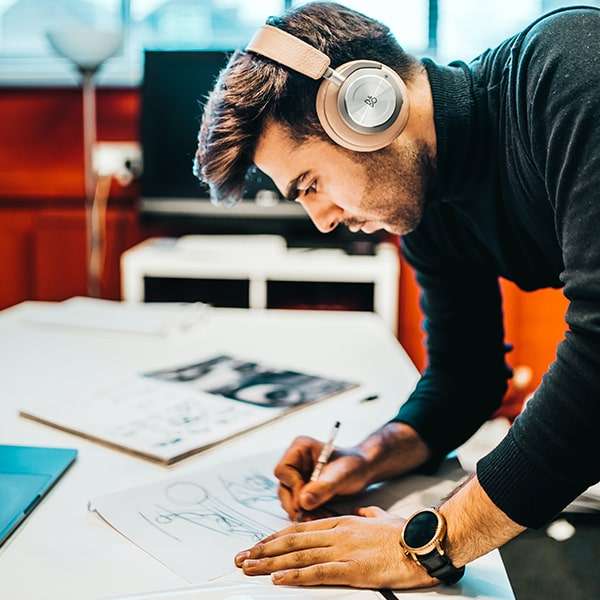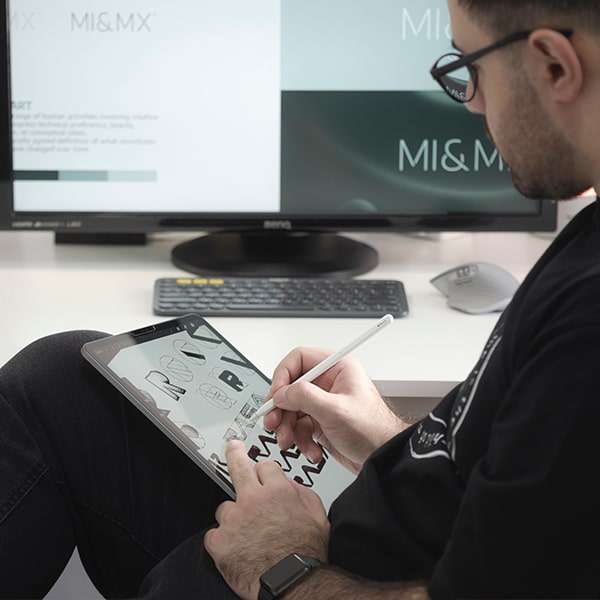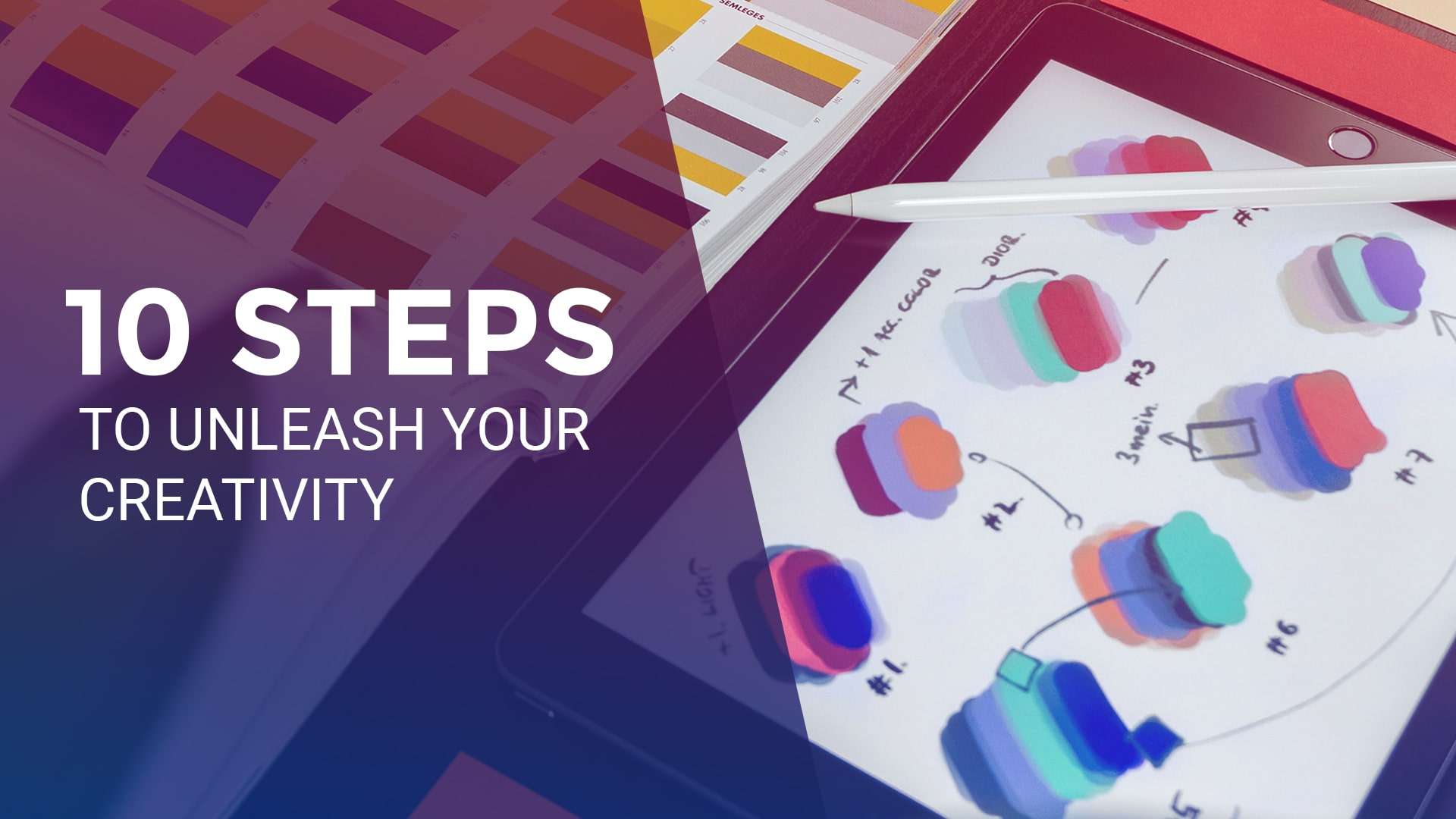Hey there, fellow creative minds! If you are here then you definitely looking to turn your passion for design into a career. If you are someone who loves creating visually stunning designs and enjoys playing with colors and typography, then graphic design might just be the perfect fit for you!
In this article, I will share my knowledge to explore the step-by-step process to unleash your creativity and guide you on How to Become a Graphic Designer. Whether you are just starting out or already have some experience, we’ve got you covered. We’ll dive into what it takes to become a successful graphic designer, including how to learn the basics, build your skills, create a professional network, and find your niche.
So let’s dive in and learn How to Become a Graphic Designer, if you’re ready to advance your love of design!
10 Steps to Unleash Your Creative Side
1. Determine Your Passion for Design

The first step for How to Become a Graphic Designer is finding your design passion is the first step in becoming a graphic designer. Ask yourself what motivates your interest in graphic design and what you hope to achieve in this profession. Do you enjoy creating eye-catching designs? Do you enjoy experimenting with colors and typography? You can use this step to decide whether graphic design is the best career choice for you.
2. Get Inspired

Getting inspired is the next stage in developing your skills as a graphic designer. Investigate various designs, from print to digital, and look at various approaches and methods. Look up other graphic designers, illustrators, and artists’ work for research and inspiration.
This step will assist you in identifying the styles and methods that appeal to you and serve as inspiration for your own distinctive designs and help you to move to next step of How to Become a Graphic Designer.
3. Learn the Basics

The next step of How to Become a Graphic Designer is to gain an understanding of the fundamentals of the field. This includes the foundational components of design, such as color theory, typography, and layout.
These skills can be acquired in a variety of ways, including through reading books, watching videos, or enrolling in an online or classroom course. By making straightforward designs and experimenting with various design methodologies, you can practice using these skills.
4. Build Your Design Skills

The following step is to develop your design skills after learning the fundamentals of graphic design. Practice creating various project types, such as logos, brochures, or websites. Create a portfolio of your best work to demonstrate your abilities to prospective customers or employers.
5. Get Feedback

A crucial part of becoming a graphic designer is receiving feedback. Ask for constructive criticism from friends, family, and other designers after sharing your designs with them. You will gain new perspectives on your work and be able to identify areas that need improvement with the assistance of this feedback.
6. P3 (Practice, Practice, Practice)

You need to practice, practice, practice if you want to become a great graphic designer. You’ll get better at designing the more you do it. Create new designs and try out various techniques to keep challenging yourself. To improve your design abilities, step outside of your comfort zone.
7. Build a Professional Network

In any profession, including graphic design, developing a professional network is essential. Meet other designers and potential clients by going to industry events, conferences, and meetups. Join groups on social media sites and network with other designers there. You can obtain introductions, job opportunities, and referrals by developing relationships with people in the industry.
8. Find Your Niche

You’ll probably discover that, as a graphic designer, you prefer to work with particular clients or on particular project types. By focusing on the work you enjoy most and developing a strong portfolio, finding your niche can help you.
For instance, you might enjoy developing visual designs for mobile apps, designing logos for start-ups, or creating unique packaging for consumer goods. Concentrating on your area of expertise will help you establish yourself as a subject-matter authority and draw in clients who value your special set of abilities and viewpoint.
9. Stay Up-to-date With Industry Trends

The next crucial step for How to Become a Graphic Designer is to stay upto date with the newest tools and trends in the graphic design world as it is a field that is constantly changing. Keep an eye on design blogs, magazines, and social media accounts to stay up to date with the newest design trends and cutting-edge technologies.
As new tools and methods become available, keep an open mind and be prepared to learn them. Graphic design requires specialized software and equipment like Adobe Creative Suite, Sketch, and Figma. But don’t stop there. Use other resources as well. As new tools and technologies enter the market, keep your curiosity alive and try them out.
By keeping yourself informed and embracing new tools and techniques, you can stay relevant in the ever-changing world of graphic design and maintain a competitive edge in your career.
10. Develop a Strong Work Ethic and Professionalism

There is fierce competition in the graphic design field, so success requires perseverance and hard work. Building a solid work ethic and professionalism is crucial if you want to succeed in your field.
This calls for punctuality, adherence to schedules, and effective teamwork in all communications. It also entails taking the initiative to go above and beyond the call of duty to provide your clien
How much a graphic designer can earn.
The level of experience, location, industry, and skill set are just a few of the variables that can affect how much a graphic designer makes.
The US Bureau of Labor Statistics reports that as of May 2020, the median yearly salary for graphic designers was $56,510. In contrast, experienced graphic designers can make significantly more money than entry-level designers.
In general, independent graphic designers can make more money per hour than full-time employees, but they may also experience less job security and benefits. A person may also make more money than someone who only has general graphic design skills if they have specialized skills like web design or user experience (UX) design.
In general, the earning potential of a graphic designer can vary greatly depending on a number of factors, but it can be a fulfilling and lucrative career for those who are skilled and dedicated.
Where to learn
Till now you have learned about How to Become a Graphic Designer and the 10 steps you should aware. But getting the appropriate education and training is crucial if you’re thinking about a career in graphic design. You may also want to look into nearby institutions that offer graphic design programs. There are many excellent online courses available that can help you advance your skills.
For a variety of reasons, going to a nearby school can be advantageous. One benefit is that you may not get those things from an online course, such as networking opportunities and hands-on experience. Additionally, pursuing your education at a nearby institution can help you establish relationships with business leaders in the region, which can be helpful when you’re looking for employment.
Some nearby institutions might provide a variety of courses, including graphic design certificates, diplomas, and degrees. These programs can give you a thorough education in graphic design and related fields like digital media, branding, and advertising.
But if you are looking for online place to learn and How to Become a Graphic Designer, here are some highly recommended online courses for graphic design:
This comprehensive course covers everything from the fundamentals of graphic design to more advanced techniques, including Adobe Photoshop, Illustrator, and InDesign.
This course is designed for beginners and covers the fundamentals of graphic design, including color theory, typography, and layout design.
Link: https://www.udemy.com/course/graphic-design-theory-for-beginners-course/
Essential Guide for the Whole Branding Team by Coursera – This course covers the essentials of branding and brand identity design, including creating visual brand elements, developing a brand strategy, and designing brand guidelines.
This course is designed for those who are already familiar with Photoshop and covers advanced techniques for creating visually stunning designs, including photo manipulation, digital painting, and graphic design.
This course covers the fundamentals of visual and graphic design, including color theory, typography, layout, and composition. It is designed for beginners and includes hands-on projects to help you apply your skills.
Link: https://www.skillshare.com/classes/Visual-and-Graphic-Design/1745021689
frequently asked questions
There are several different types of graphic designers, and the categories can vary depending on how they are defined. However, here are four common types of graphic designers:
Branding and Identity Designers – These designers specialize in creating visual identities for companies or organizations, including logos, color palettes, and other branding elements.
User Experience (UX) Designers – These designers focus on creating digital products that are easy to use and navigate. They often work on websites, apps, and other interactive media.
Print Designers – These designers create designs for physical media, such as brochures, packaging, and billboards. They need to have an understanding of print processes and materials, as well as design principles.
Motion Graphics Designers – These designers create animations and videos for a range of media, including commercials, films, and social media. They need to have strong skills in animation, storytelling, and video production.
It’s worth noting that many graphic designers may have skills in more than one of these areas, and some designers may specialize in other areas such as web design, illustration, or advertising.
You will typically need a bachelor’s degree from an accredited university, college, or private design school for entry-level and advanced graphic design positions. To get your certification, you can choose from a number of schools if you’re aiming for an associate’s degree.
There are several software options available for graphic design beginners. Here are a few popular ones:
Adobe Photoshop – This is a versatile and widely-used software that allows for the creation and manipulation of digital images. It is particularly well-suited for editing photographs and creating digital artwork.
Adobe Illustrator – This software is ideal for creating vector graphics, which are scalable and can be used for a range of applications. It is often used for designing logos, icons, and other graphics.
Canva – This is a web-based design platform that offers a range of templates and design elements to help beginners create designs quickly and easily. It is particularly useful for creating social media graphics, marketing materials, and other simple designs.
Affinity Designer – This is an affordable and user-friendly vector design software that offers a range of tools for creating high-quality graphics.
Conclusion
In conclusion, a career as a graphic designer can be satisfying and rewarding, allowing you to use your creativity and design abilities in a variety of ways. You can have a successful career in this field by building a strong foundation in design principles, becoming an expert at using software tools, and developing a strong portfolio.
It’s critical to keep learning and developing as a designer, regardless of whether you decide to enroll in an online course or a local university. Keeping abreast of the most recent design trends and technologies can help you maintain your competitive edge and draw in new customers or employers.
Anyone interested in pursuing a career and learn How to Become a Graphic Designer: start by investigating your educational and training options to determine which one best suits your requirements and objectives. To learn more and hone your skills, take advantage of online resources and design communities. For the purpose of showcasing your abilities and luring customers or employers, think about developing a portfolio of your work.
You can pursue a lucrative career in graphic design and take advantage of the many advantages this industry has to offer with commitment and hard work.

